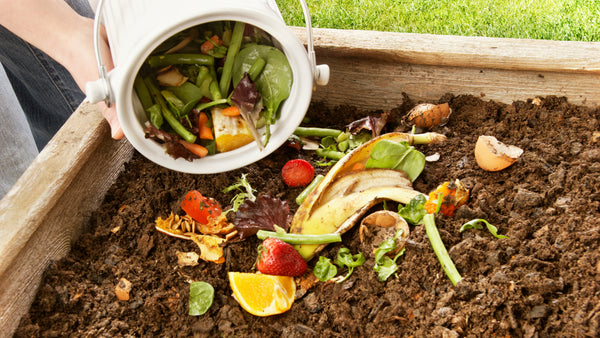How to start composting
Now that Spring has sprung, a lot of us will be spending a weekend or two clearing out the garden, getting it ready to enjoy in the warmer months to come.
With trimming, mowing and weeding, gardens do produce a lot of waste, and local collections vary -with a lot of places get no collection at all for green waste.
One option to help use up some of your garden and kitchen waste is composting. It's easy to do, good for the environment and also means you have compost ready to use in your garden when it comes to planting.
In this blog, we look at some handy tips on how to start composting.

Make use of layers
Your compost heap ideally needs drainage and aeration. Using piles of twigs/branches is a clever way to achieve this and use up even more garden waste from your trimming. Make a pile of twigs and branches at the bottom, then make layers with a mix of types of waste.
Invest in a good bin
While composting is a great idea for so many reasons and a super productive and efficient thing to do in your garden, it isn't the most slightly thing to have lying around. Therefore, having a special compost bin is a good investment to keep your garden looking nice and tidy. Take a look at our beehive compost bin, available in two different sizes and a good-looking addition to any garden.

Mix up your materials
A compost heap needs to have a good mix of materials in order to ensure the materials decompose fully and to balance out bad odours. Mix green garden waste with kitchen food waste and cardboard and paper. Avoid using meat or fish waste as these will attract pests and will also contribute to a bad smelling heap, which you don't want in your garden!
Maintain your heap
Turn over your compost heap regularly to make sure air gets to it and the contents decompose evenly. As well as air, your heap needs to remain moist, so in the dryer months make sure to water it so that it constantly remains damp. Keep adding items to your heap on a regular basis.
After several months to a year, your compost should turn dark, be a crumbly texture and have that earthy smell, and it's then ready to use. With a bit of patience, this time next year you could be potting your flowers in compost made in your very own home!
